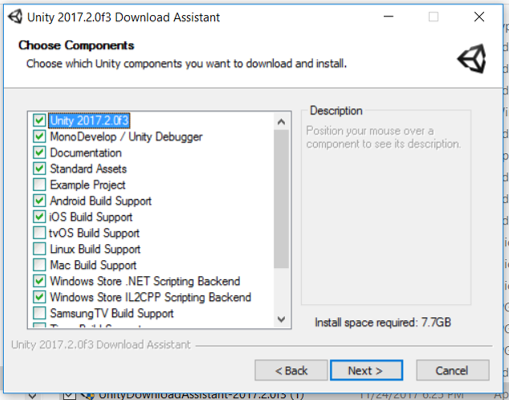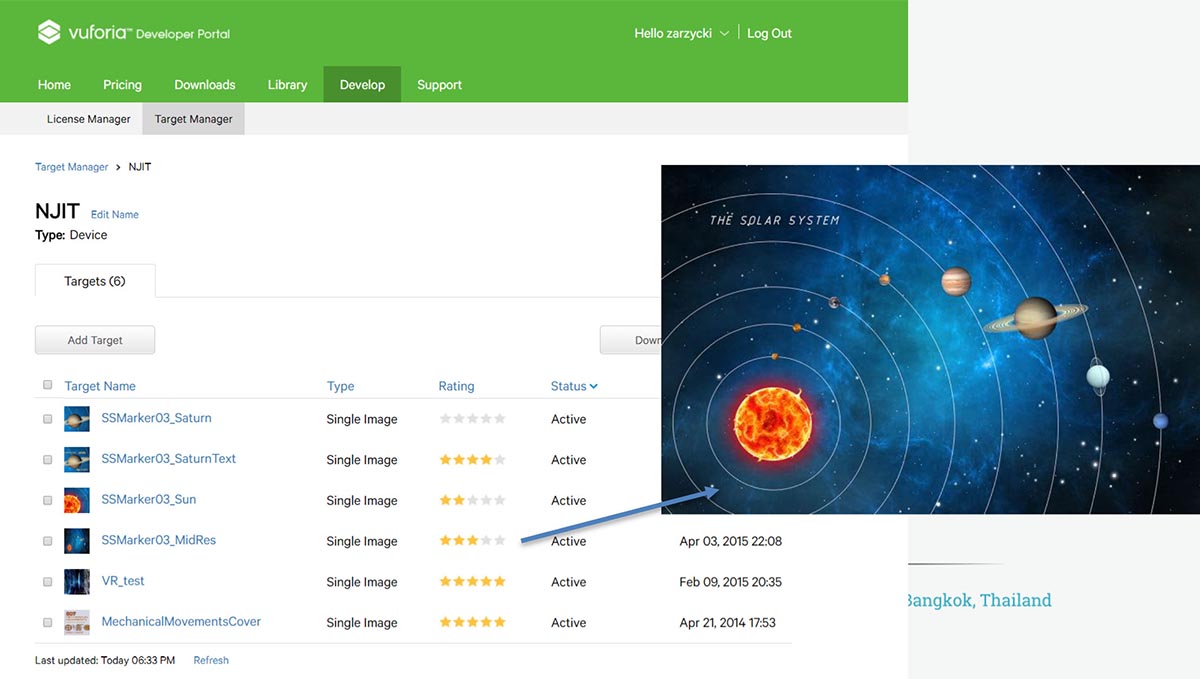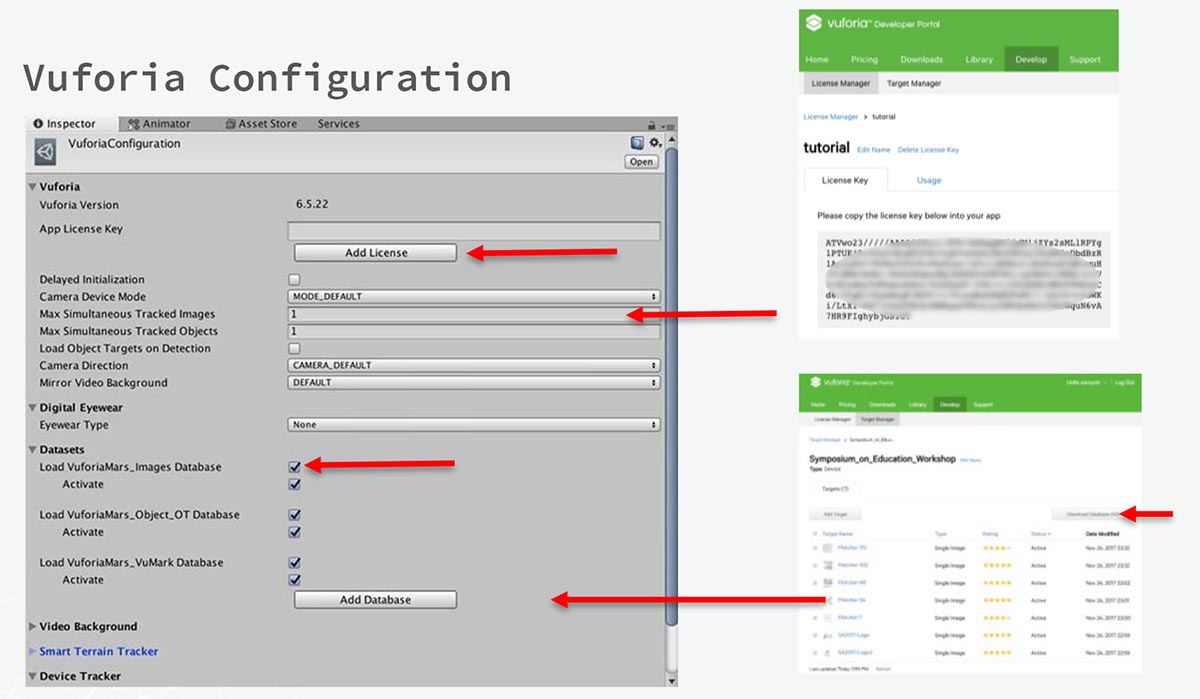NJIT Coursework
ACM SIGGRAPH Asia 2017
Symposium on Education, Workshop
- Downloading Unity 3D: (https://unity3d.com/get-unity/download)
- Set up the developer account with Vuforia (developer.vuforia.com)
- In License Manager Tab press Get Development Key to get a unique key for your project/application. You will need to use this key within Unity3D.
- In Target Manager Tab create a new database for image targets by clicking Add Database.
- When installing Unity3D make sure to include Vuforia package. Vuforia is now integrated with Unity3D software.
- Sample files package is available via Unity Store, need to installed through Unity3D interface
- After installation you need to enable AR feature in the Unity:
- Go to the Build Settings in File > Build Settings … and choose Player Settings This will open Inspector on the right interface panel
- Go to XR Settings on the bottom and check Vuforia Augmented Reality
- Go to Vuforia Configuration in Window > Vuforia Configuration and add the license key from developer.vuforia.com website
- Vuforia Configuration allows also to load datasets of Image Targets used in the project
- To use Image Targets make sure to load them by checking boxes in the Datasets section of the Inspector.
- The number of allowed simultaneous simulations (for Image Targets) is defined in the Vuforia section of the Inspector.
- Additional instruction can be found on the websites:
integration of Vuforia with Unity3D - Download image target database and image targets for demonstrations
- Download sample Unity3D project utilizing packages listed above.
Visual Guides




